North Korea’s Pursuit of an ELWR: Potential Power in Nuclear Ambitions?
Recent indications from the International Atomic Energy Association (IAEA) and several analysts, including experts at the Center for Nonproliferation Studies, propose that North Korea’s Yongbyon Nuclear Scientific Research Center’s Experimental Light Water Reactor (ELWR) likely began operations in October of 2023. While North Korea initially built the ELWR for energy production, concerns arise that it can be repurposed for plutonium production. Here, we examine the ELWR’s operational status using newly acquired high-resolution thermal and electro-optical images. A heat signature at the power switchyard supporting the ELWR, combined with a continuous surge of warm water discharge at the suspected cooling lines, suggests that the ELWR may be undergoing pre-operational testing or is in the early stages of operation. Notably, the muted heat signature of the ELWR reactor dome compared with the 5 MWe Reactor indicates that if the ELWR is operational, it is likely operating at a reduced power level than as initially designed.
When operating at full capacity, the ELWR could significantly increase North Korea’s fissile material stockpile, facilitating Kim Jong Un’s stated ambition for an “exponential increase of nuclear arsenals.” Therefore, while North Korea has not yet provided any concrete data regarding the progress of the ELWR, it remains imperative to monitor its status.
Background
When the 1994 US-North Korea Agreed Framework—aimed to freeze North Korea’s indigenous nuclear power plant development in exchange for the two light water reactors—led to no promising outcome, North Korea decided to build its own light water reactor, which led to the Experimental Light Water Reactor (ELWR). The reactor marked North Korea’s second domestically-built reactor, following the 5-megawatt energy (MWe) (or 25 MW-thermal, MWth) graphite-moderated CO2-cooled reactor (GCR) designed for plutonium production—a critical component for nuclear weapons. Unlike the 5 MWe Reactor, the ELWR is intended for energy production, although it can be repurposed for plutonium production. In addition to these two reactors, North Korea has a Soviet-supplied IRT-2000 research reactor at Yongbyon as well as two never completed 50 MWe and 200 MWe gas-graphite reactors at Taechon, whose construction was successfully suspended by the Agreed Framework, and two unfinished light water reactors at Kumho that were the focus of Korean Peninsula Energy Development Organization (KEDO) efforts.
Designed as a 100 MWth pressurized light water reactor, the ELWR was to serve as a prototype for a larger electricity-producing light water reactor. When fully operational at maximum capacity, this reactor would provide enough electricity for ~100,000 North Korean households. Yet North Korea faced significant delays in achieving its goal, likely due to technical challenges in completing the cooling system and producing suitable fuel for the new reactor technology.
North Korea decided to build the ELWR in April 2009, and the reactor appeared externally complete by 2013 (Figure 3).[1] Subsequently, moderate activity was observed between 2013 and2020, such as the installation of pipelines purposed for the reactor cooling systems and subsequent water discharge, vehicle presence throughout the complex, and snowmelt. But for over a decade since its construction, definitive evidence substantiating the ELWR’s core engagement remained elusive.
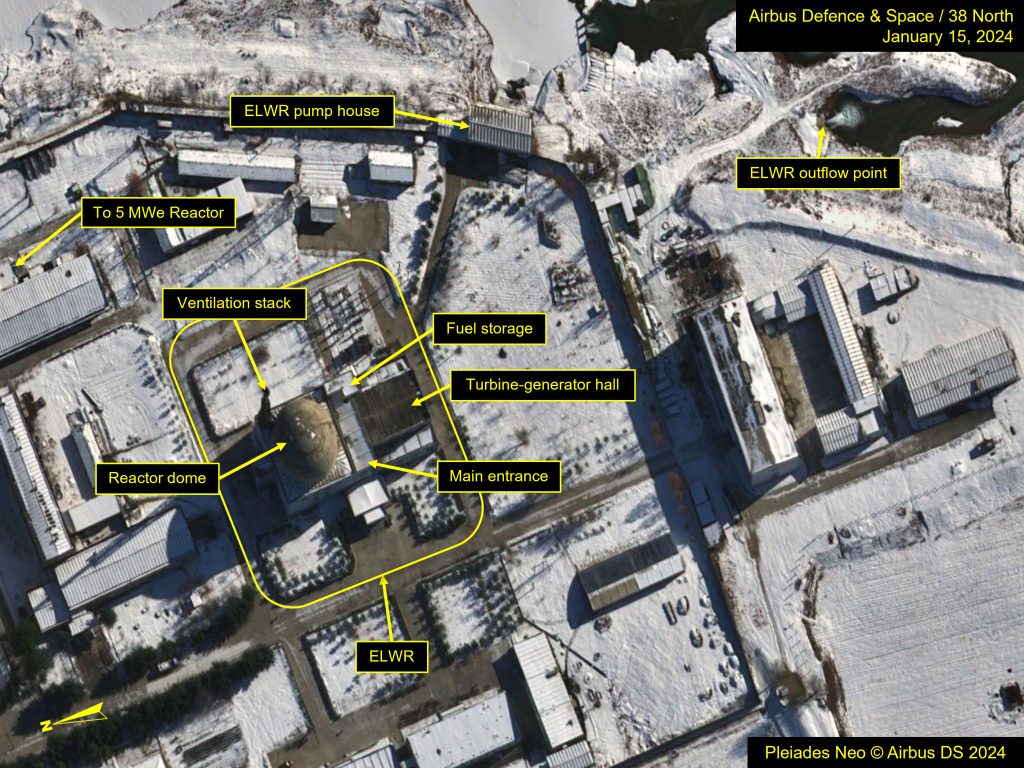
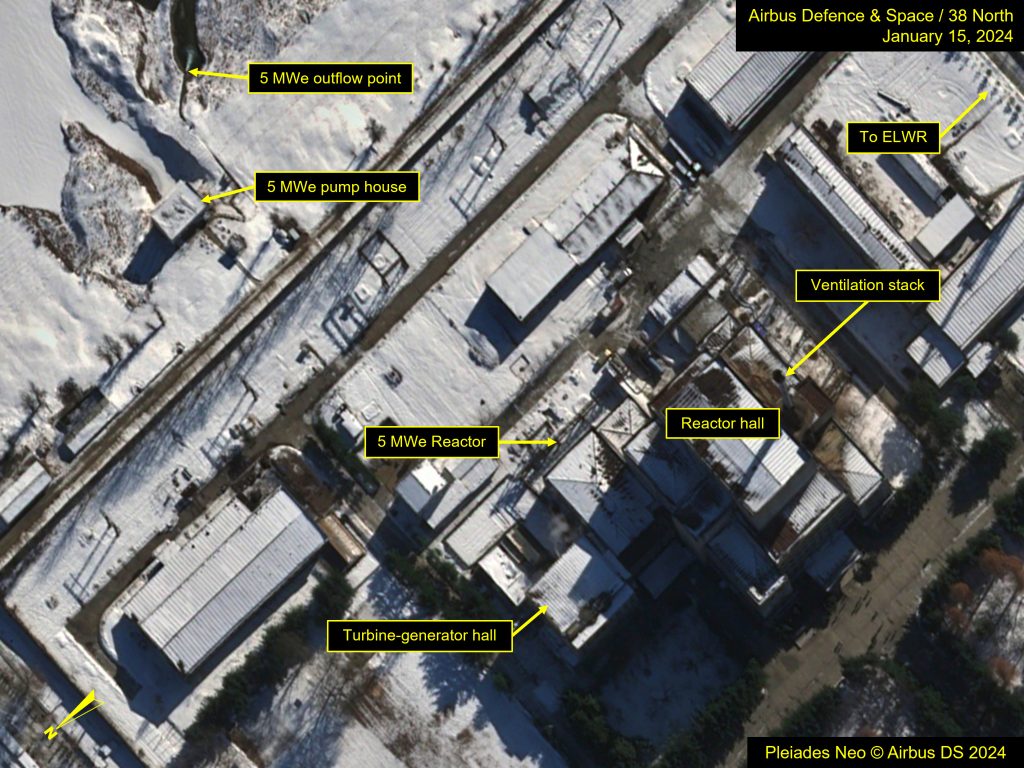
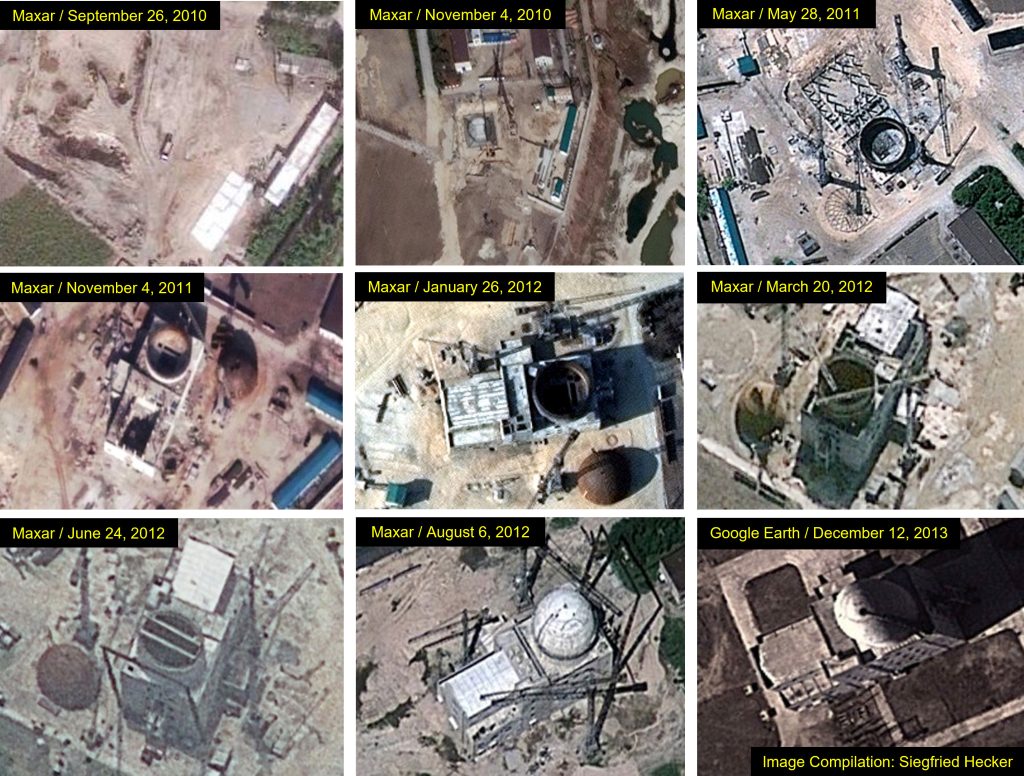
Optical Imagery
The recent developments at the Yongbyon Nuclear Research Center indicate North Korea’s dedication to bringing the ELWR online, along with the continued operation of the 5 MWe Reactor.
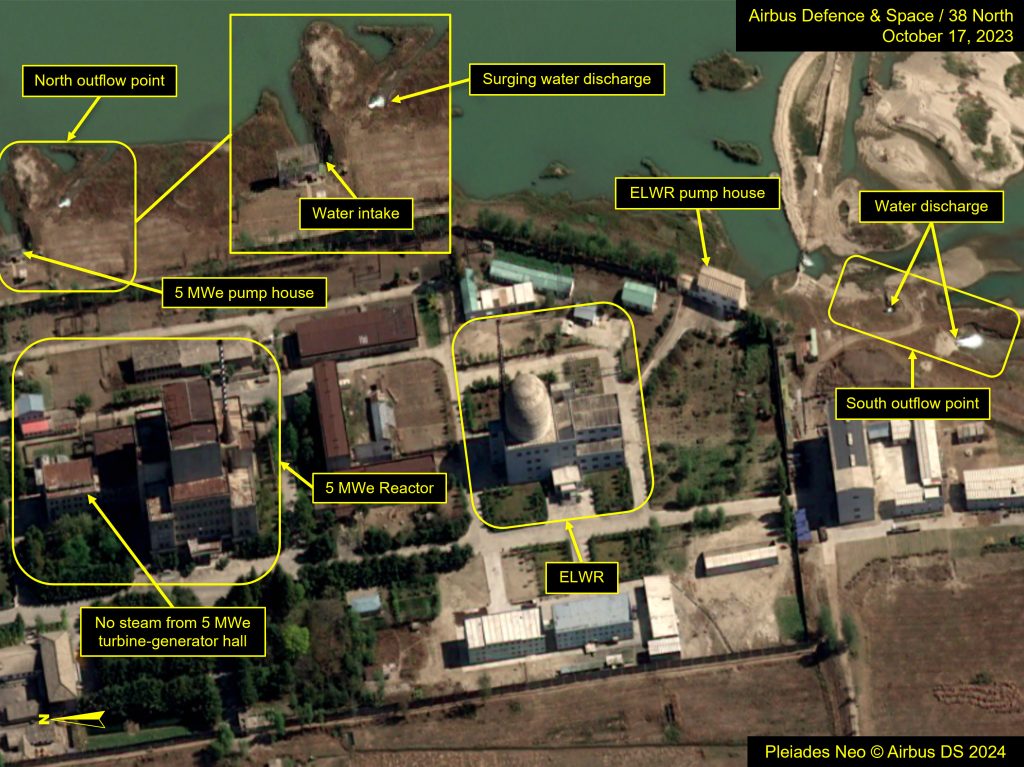
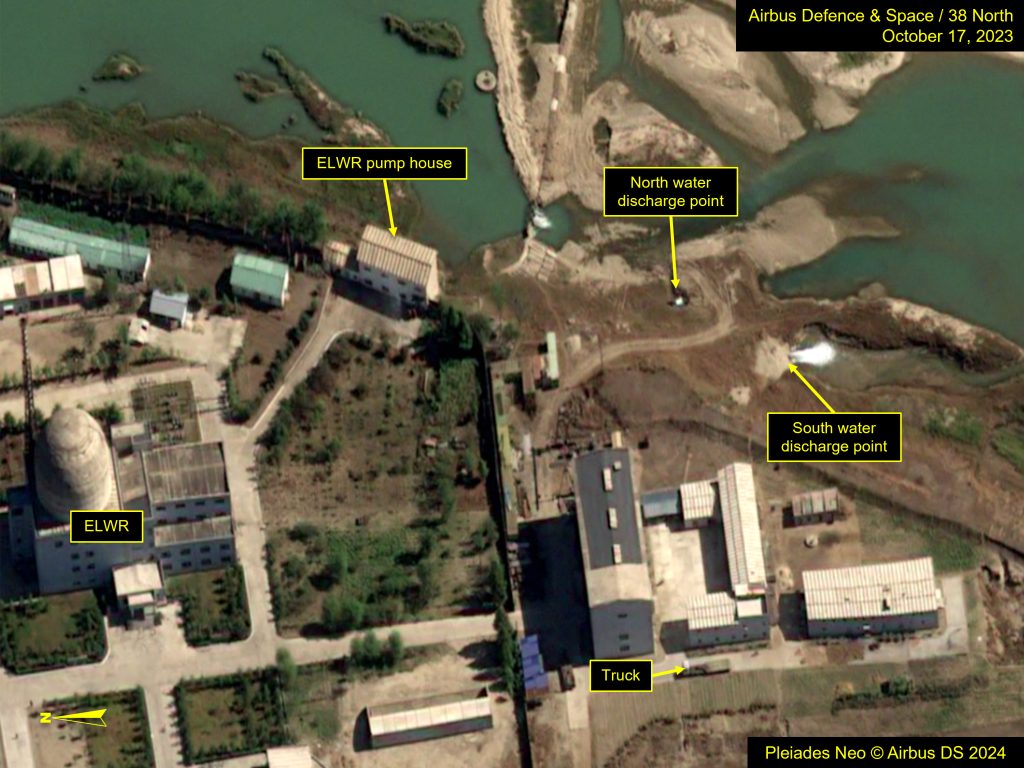
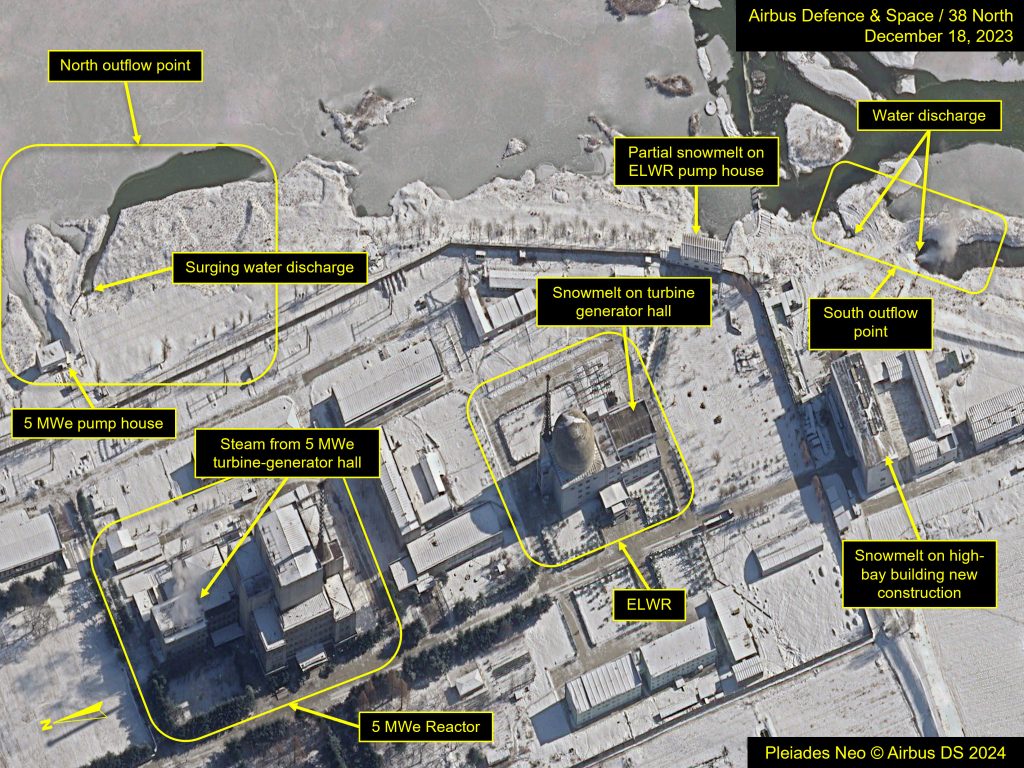
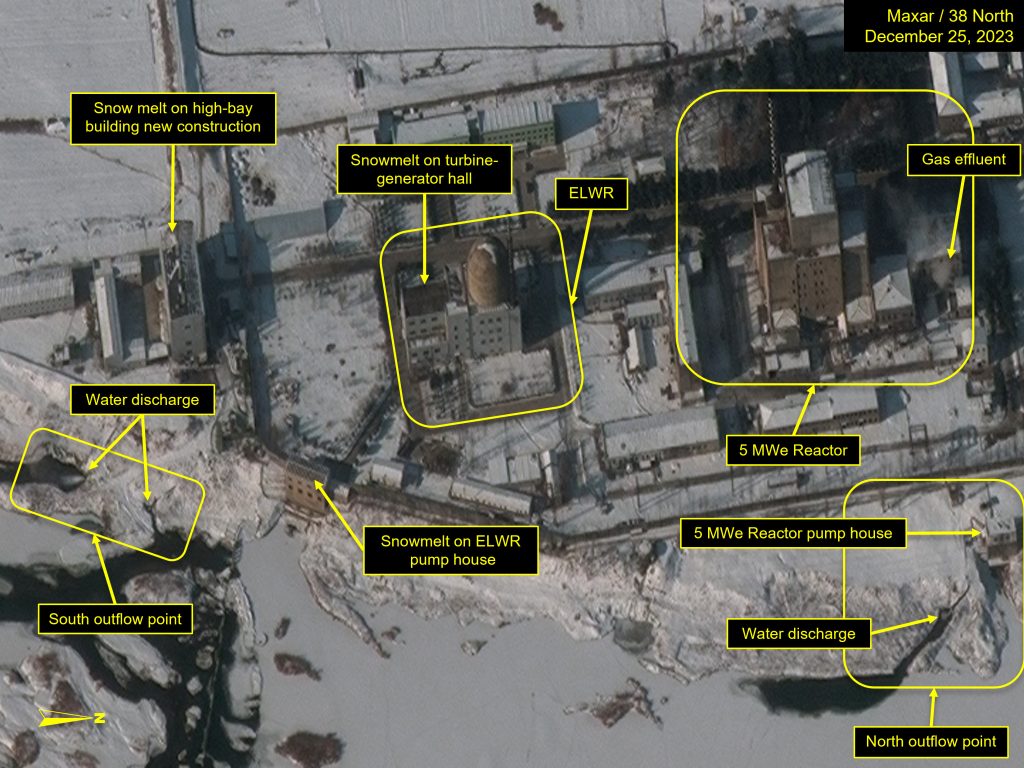
Read More: North Korea’s Pursuit of an ELWR: Potential Power in Nuclear Ambitions?

